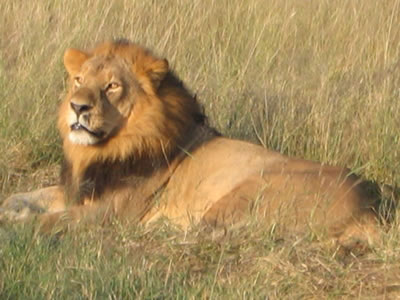 A grassland is a region on Earth that is too dry for more than a few trees or bushes to grow, but not as dry as a desert. As the name suggests, grassland is covered with grass.
A grassland is a region on Earth that is too dry for more than a few trees or bushes to grow, but not as dry as a desert. As the name suggests, grassland is covered with grass.
Grassland can be found on every continent except Antarctica and constitutes about 25 percent of the Earth’s land area.
People have been farming on grassland for a very long time. These regions are very good for farming because they are flat and can support large, grazing animals. Grass grows from close to the soil. Therefore, animals can chew the tops of grass and the grass will continue to grow.
In many cultures, people regularly set fires to grassland to prevent trees from growing there, so they can continue to use the land for agriculture. The low growing point of grass means that it will soon grow back after it has been set on fire.
There are two types of grassland, classified according to where they are located on Earth: tropical grassland and temperate grassland. Tropical grassland is located in and near the tropics, which are between the Tropic of Cancer (23.5 degrees north) and the Tropic of Capricorn (23.5 degrees south). Temperate grassland can be found in the temperate zones, between the tropics and the polar regions.
Tropical Grassland
Tropical grassland has a rainy season and a dry season. It does not experience spring, summer, autumn or winter. This is because the tilt of the Earth’s axis, which causes these four seasons, has no effect in the tropics and little effect just outside them. Therefore, there are no major seasonal temperature changes.
The most well known tropical grassland is the savanna of central Africa.
Some animals that live in tropical grassland are lions, leopards, cheetahs, hyenas, jackals, zebras, giraffes, elephants and rhinoceroses.
Temperate Grassland
Temperate grassland is known as plains or prairie in North America, pampas in South America, steppes in eastern Europe and Mongolia and veld in southern Africa.
The Earth’s axis does affect the temperature in these regions so they experience the four seasons. Summers are hot and winters are cold.
When it is very cold, grass does not grow.
However, many roots grow deep into the soil so that the grass can grow again when it becomes warmer.
When these roots decay, they send rich nutrients into the soil. This makes temperate grassland especially ideal for farming. Countries with large areas of temperate grassland are often successful grain exporters. These countries also tend to have large livestock industries, since the fertile land provides enough food for many cattle or other large, grazing animals.
Leopards, lions, hyenas, coyotes, wolves, foxes, deer, badger, prairie dogs, cows and kangaroos are just some of the animals that live in temperate grassland.